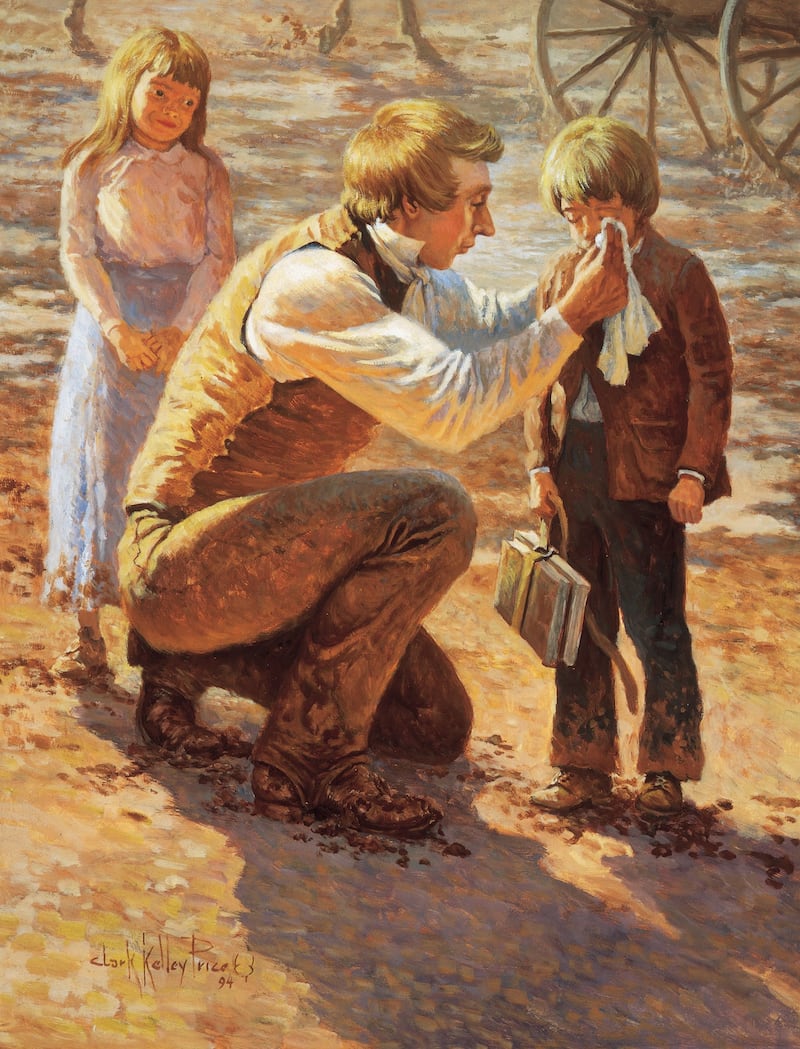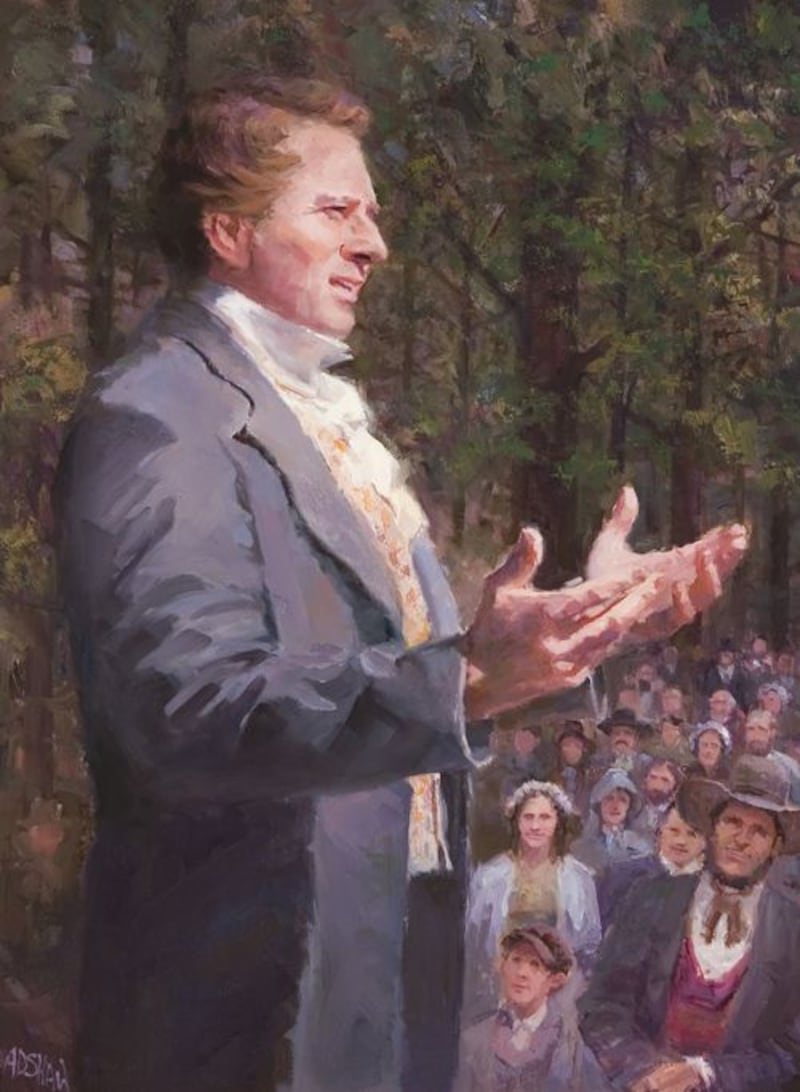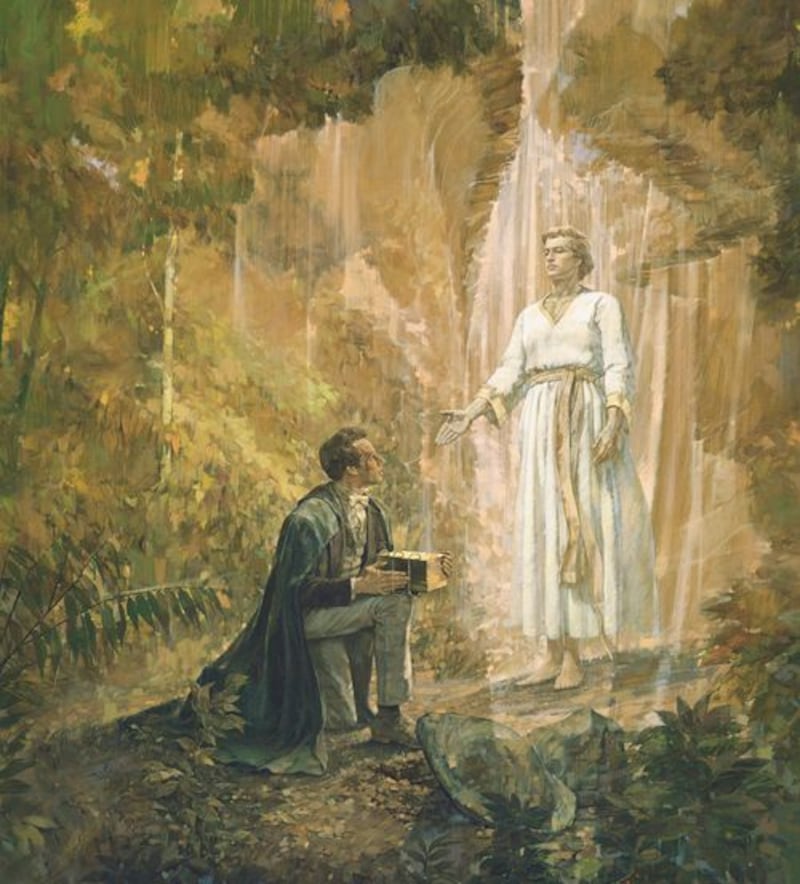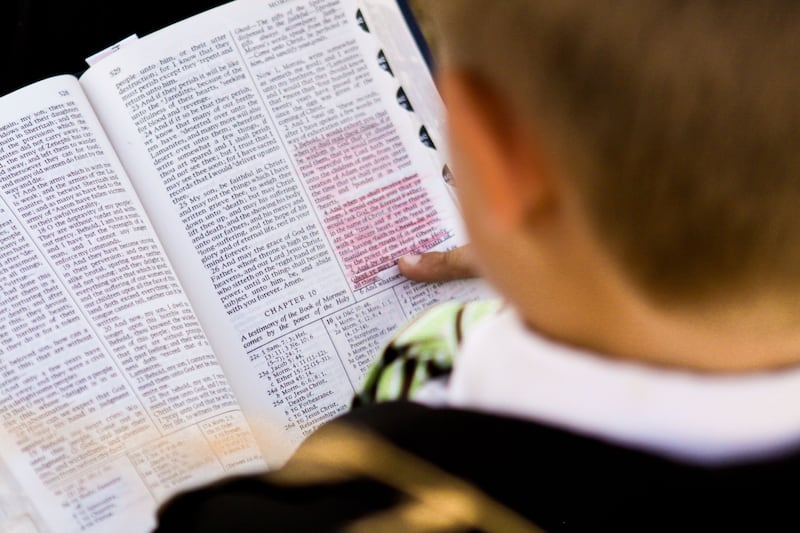One could pull out a smartphone at any given point and with just a few key taps find an abundance of conflicting narratives regarding Joseph Smith, his life, teachings and character as the founding prophet of The Church of Jesus Christ of Latter-day Saints.
Seeking to provide an honest exploration of commonly debated questions among scholars, critics and church members alike, the Church of Jesus Christ announced Wednesday it has recently added three new pages to its “Topics and Questions” resources.
These three pages — each following a simple, Q&A format — offer details on the character of Joseph Smith, the translation of the Book of Mormon and the practice of plural marriage.
They also join others which, added to “Topics and Questions” during the past year, explore topics such as race and the church, women’s service and leadership within the church and the multiple accounts of Joseph Smith’s first vision.

Joseph Smith’s character
Joseph Smith was a “man of faith,” sincerely devoted to his belief in Jesus Christ and the revelations he received from God, according to one of the recently added pages.
He was young, hardworking and approachable, and while he possessed little formal education, he was also a “deep thinker,” often interested in studying languages and trying to familiarize himself with law, politics and other subjects.
“(Joseph Smith) is not an educated man,” wrote New York journalist Matthew L. Davis in an 1840 letter to his wife. “But he is a plain, sensible, strong-minded man. Everything he says is said in a manner to leave an impression that he is sincere. There is no levity — no fanaticism — no want of dignity in his deportment.”
According to the page, Joseph Smith also held a “ready sense of humor,” and being caring and generous, he actively sought to meet the needs of the poor in his community.
“He also stood up for the rights of others to practice their religion free of violence and discrimination,” the page states.

But was he perfect? No.
Like all human beings, Joseph Smith was “subject to mortal weaknesses and shortcomings.”
In fact, he often acknowledged his imperfections, including by publishing revelations in which God censured him for his mistakes and instructed him to repent.
Yet, the page affirms, “God has always worked through imperfect servants to accomplish His work, raising them up and strengthening them as they seek to do His will. This was certainly true of Joseph Smith.”
Knowing this, however, may not entirely satisfy questions about his potential wrongdoings, thus the new page seeks to explore and paint readers a broader perspective regarding common accusations.
For instance, the page explores whether Joseph Smith was ever convicted of “illegal activities.” It states that while Smith was the defendant in 21 known criminal cases, many of these stemmed from prejudice against Latter-day Saints or false allegations.

“Almost all of them were dismissed due to lack of evidence or did not progress to trial,” the page reads. But it does not deny that existing records reveal just one “unambiguous criminal conviction.”
In 1843, Joseph visited a Nauvoo city lot he believed had been “unfairly seized” by a county tax collector. What started as a verbal disagreement between him and the tax official escalated to a “physical confrontation,” the page states.
However, immediately afterward, “Joseph Smith voluntarily submitted to a local justice of the peace, confessed his guilt and paid a fine.”
Other questions the page explores include whether Joseph Smith paid his debts or exercised undue political power in Nauvoo. It also offers readers a way they may “make sense of the conflicting views” that exist online regarding Joseph Smith.
Lorenzo Snow, fifth president of the Church of Jesus Christ, once commented on Joseph’s weaknesses, saying he “thanked God” that He would place upon Joseph — an imperfect man — the “power and authority” that He did.
“I respected (him) and I was pleased to see those weaknesses,” he said, “for I knew I myself had weakness, and I thought there was a chance for me.”
The translation of the Book of Mormon
Another of the new pages explores the translation of the Book of Mormon, first stating the book came forth “through a series of miraculous events.”
“It is the translation of an ancient record engraved on plates that was preserved for centuries and entrusted to Joseph Smith by an angel named Moroni,” the page reads. “The translation was accomplished not using traditional methods, but by divine revelation.”
What exactly is meant by divine revelation? Well, according to the page, the text on the Book of Mormon plates was inscribed in an “unknown ancient language.” Possessing limited education, Joseph “could not translate the text by conventional means.” Rather he had to rely on “divine help” to render the ancient text into English.
“I would inform you that I translated, by the gift and power of God,” wrote Joseph in the preface of the 1830 edition of the Book of Mormon.

The new page says Joseph repeatedly affirmed this statement and didn’t share many more details about the translation process; yet, it explains much of what is known today comes from “later eyewitness accounts.”
These accounts describe “two different stone instruments” Joseph used to translate, as well as the plates’ role in the translation process.
While the page provides further details on how Joseph appeared to use these items in the translation process, it ultimately states the process enabled the Lord to transform “young Joseph into a prophet and seer, fulfilling the Book of Mormon prophecy that He would ‘raise up’ a seer in the last days to help accomplish His work.”
But if the translation was divine, why did Joseph make revisions after the fact?
According to the page, Joseph dictated the Book of Mormon text to his scribes. Prior to publication, Oliver Cowdery — one of Joseph’s scribes — created a handwritten copy of the original manuscript for the typesetter’s use.
“Both manuscripts were largely unpunctuated,” the page states, adding that the typesetter inserted “almost all of the punctuation.”

Thus, throughout this copying and typesetting process, “small errors were introduced.”
When a second and later third edition of the Book of Mormon were needed, Joseph made minor revisions to standardize the text and bring it closer to the original manuscript.
“Almost all of Joseph’s revisions were minor and do not alter the meaning of the text,” the page explains. “However, Joseph made a few clarifying changes that were more substantial.”
For example, in 1 Nephi 8:4, Joseph changed the words “me thought I saw a dark and dreary wilderness” to “methought I saw in my dream, a dark and dreary wilderness.” This change clarified Lehi was describing a vision.
Another revision changed the word “white” to “pure” in 2 Nephi 30:6 to describe the change that would come upon the Lamanites when they repented. Now the text teaches they would become “a pure and a delightsome people.”
The page instructs those interested in reviewing all changes to visit josephsmithpapers.org where transcriptions of the existing manuscripts and early editions of the Book of Mormon are available.
Additional questions on the page explore topics such as whether the testimonies of the Book of Mormon witnesses are reliable and how one can know the Book of Mormon is true for themselves.

The practice of plural marriage
The final of the three new pages answers questions about the practice of plural marriage, a principle the church taught from the early 1840s to about 1890 in “response to revelation given to the prophet Joseph Smith.”
It begins by explaining that both the Bible and the Book of Mormon teach monogamy is God’s standard for marriage “unless He declares otherwise.”
Though the page makes clear church members “do not practice plural marriage today,” it acknowledges that, in the early days of the church, the practice — also called polygamy — “required faith and sacrifice from both men and women.”
It was a “cause of significant opposition toward the church for many years,” the page reads. “And yet the Saints were committed to keeping God’s commands and trusted that God would bless them for their obedience. Eventually, the Lord directed the Saints to discontinue the practice.”

Joseph’s wife Emma Smith struggled with the practice herself.
“According to accounts of others, Emma opposed plural marriage except for a short period of time when she consented to at least four of her husband’s plural sealings,” the page says. “Ultimately, she rejected the practice.”
Yet, the page explains Joseph and Emma “remained deeply committed to one another.”
Towards the end of her life, Emily Partridge — one of Joseph’s plural wives — reflected on Emma’s “complicated feelings” towards the practice and said: “I know it was hard for Emma, and any woman, to enter plural marriage in those days, and I do not know as anybody would have done any better than Emma did under the circumstances.”
The page further explores several aspects of this historical practice, including why the church taught and practiced plural marriage in the 19th century, Joseph Smith’s personal involvement in the practice and women’s lived experiences within the practice.

Tips on seeking answers
Acknowledging that questions may linger even with these and other resources, the church has offered readers a series of principles and resources in a section titled, “Seeking Answers to Questions.”
This resource includes subsections which help and instruct readers to:
- Center their life on Jesus Christ
- Be patient with themselves and others
- Recognize revelation is a process
- Consult reliable sources
- Work to understand the past
In its introduction, the resource also quotes Elder Dieter F. Uchdorf of the Quorum of the Twelve Apostles who, noting some may feel “embarrassed or unworthy” for having questions about the gospel, said “they needn’t feel that way.”
“Asking questions isn’t a sign of weakness; it’s a precursor of growth,” he taught.
Church resources advise those helping others navigate their own questions to respond with love, listen with humility, trust in the Lord, nourish their own faith and assist others throughout their journey.


